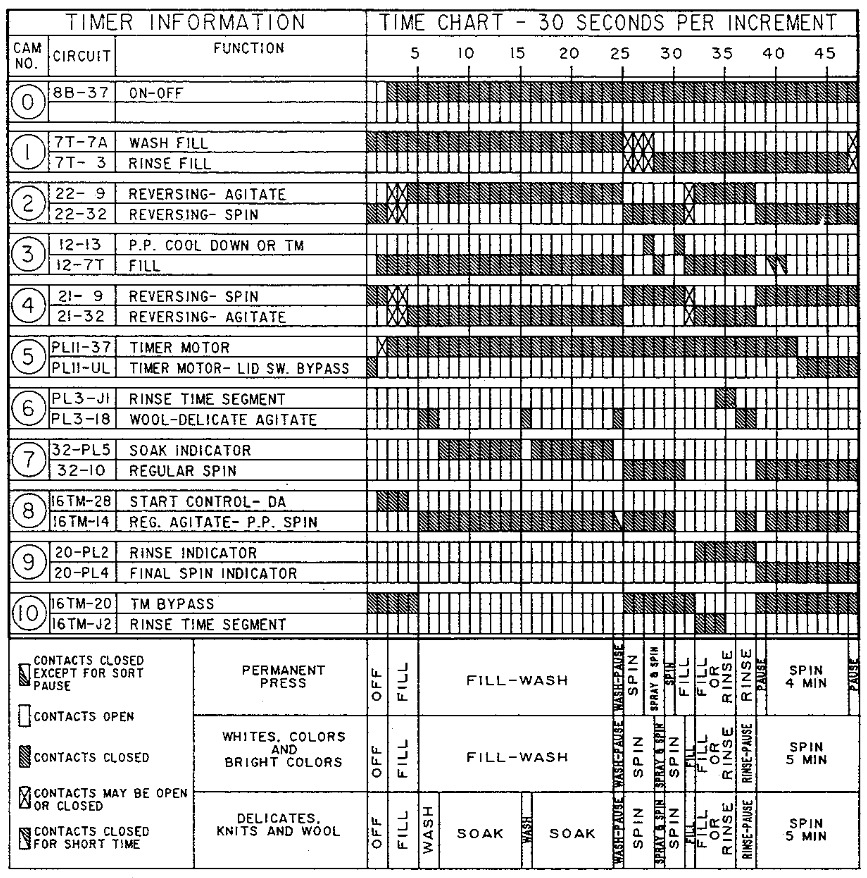Small vs medium vs large loads would be a good idea to test.
I timed the deep rinse fill on my Speed Queen at 4:45 (4 minutes 45 seconds) on a medium load but water level set to max. I paused the timer at 2:00 minutes of filling and the tub was less than half full.
After I set the timer manually to the spray rinse increment (which ends up giving a spray lasting about 2 minutes 14 seconds instead of 30 seconds) the washer spun for for 1 minute 38 seconds before stopping for the deep rinse. At this time the periods/amount of water being ejected from the drain hose had significantly declined. I would say 2 minutes between each spray is enough to get the clothes reasonably dry.
@frigilux: The spray not hitting all the clothes is ok in theory. The spray is to saturate the clothes with water and then have the spin extract the saturated water. The water would migrate up and down through the un-sprayed clothing before finding its way out the inner tub holes. Spraying the clothes just to the point of terminal saturation, extracting them dry, then repeating the cycle several times maximizes water. A continuous spray would bounce some water off the clothes once terminal saturation is reached instead of being absorbed into the fabric then pulled out.
4 30 second spray rinses with 2 minutes of spin in between would in my opinion work best for a large load. An extra rinse switch could add one or two extra sprays.
Cycles could also be made to take fabric density and load quantity into account. Delicates would get 4 15 second sprays with 1 minute interm spins, casuals 3 30 second sprays with 1 min 30 second interm spin, normal 4 30s sprays with 2 min 30 second interm spin, heavy duty 4 45 second sprays with 4 minute interm spins, ect. Spray to absorb- stop at terminal saturation-extract to dry % of weight, repeat a number of times determined by amount of detergent added in the wash.
In theory flow sensors in the drain port, fill flume and current measured in relation to load could be used to control an internal logic algorithm for determining the precise amount of water needed for a total spray rinse system.





